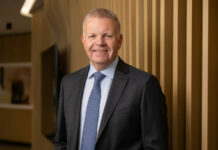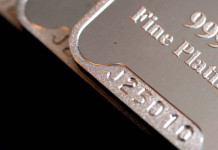
[miningmx.com] — CELLPHONE companies are the likeliest large scale entry points for a South African platinum fuel cell industry, for which Anglo American Platinum (Amplats) is paving the way.
Amplats has created a R100m PGM development fund as a means to help create a fuel cell market in South Africa. It has lined up US firm Altergy to establish a local fuel cell factory once sufficient demand exists.
Platinum is the preferred material for the critical components of a fuel cell.
Altergy needs sales of 800 to 1,000 fuel cells a year to justify the construction of a plant in South Africa, said Richard Willis, COO of Douglas Investments, a hedging fund appointed by Amplats.
“The cellphone industry in South Africa has about 20,000 relay stations, all with diesel generators,’ Willis said. “In Africa there are about 70,000 cellphone base stations that require generators.’
The other likely market is for underground locomotives in mines, a prototype of which Amplats put into operation at its Khomanani mine outside Rustenburg last week.
Rising energy costs are putting a lot of pressure on the mining industry, while the clean energy of a fuel cell has great benefits, especially underground.
In the cellphone industry, the challenge is to convince the country’s two largest cellphone operators, Vodacom and MTN, that fuel cells are cheaper and more reliable.
At present there are 100 fuel cells in the country, which various users have been testing for the past 15 months.
“Vodacom is testing 17 of the 100 cells. All the claims by the manufacturer – such as how regularly maintenance must be carried out, the cost of recharging it with fuel (hydrogen) and the efficiency – are being analysed,’ Willis said. The 17 cells have already provided 2,5 MWh of electricity.
A 5 kW fuel cell – the size used for the cellphone industry – will cost between R150,000 and R200,000, which is considerably more than for diesel-powered generators.
However, in the US, the combined capital and operating cost of a fuel cell, Willis said, was up to 80% cheaper than for a diesel generator.
Fuel cells are also much more efficient and reliable than ordinary power generators. A 5 kW fuel cell will constantly provide exactly the right current, while the current from an internal combustion engine fluctuates a great deal.
However, the major benefit is that fuel cells do not produce any carbon emissions. The only by-product is pure water.
“In two American states, Florida and California, fuel cells are subsidised by the state, which has made them viable in cellphone base stations,’ said Gavin Coetzer, development head of Clean Energy Investments, which markets Altergy’s products in South Africa.
“We feel that the operating costs of diesel generators have increased so much in Africa that fuel cells will be viable, even without subsidies. The theft of diesel from the generators at base stations makes it very expensive. In Nigeria there are power failures every day of up to seven hours at a time, which means the operating cost of a diesel generator is very high,’ Coetzer said.
Hydrogen is a by-product in most chemical industrial processes. Sasol, for example, produces large quantities of it. Only a small portion of that is supplied to gas companies, like Air Products.
In a fuel cell, 70g of hydrogen produces 1 kWh of electricity.
South Africa has been seen as the ideal location for a fully fledged hydrogen fuel cell industry since the 1980’s, as the country produces more than 75% of the world’s platinum. But there have always been many obstacles, for instance the setting up of supporting infrastructure.
In the past few years, an industry has been established in the US, and in Japan the five largest motor manufacturers last year decided to equip all the filling stations on the country’s highways with hydrogen pumps by 2015.
– Sake24










